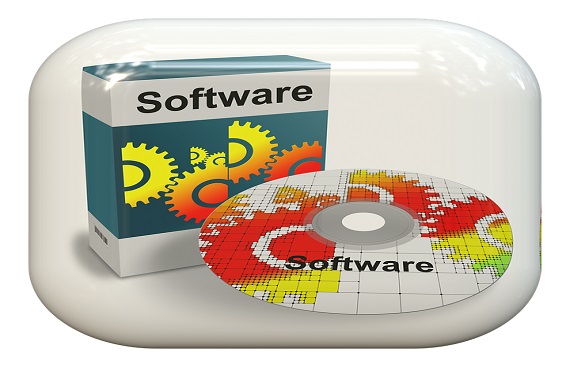Digital Adoption Platforms - helping employees adapt to new software packages

Depending on whether you were born before about 1980, you might remember one of the most annoying things in the world of computing – the dreaded Microsoft ‘Clippy’. In 1997, Clippy became a feature on MS Windows screens with a helpful (or not) tip when it / he detected that you were trying to do something, failed, and started to attempt the process again. It’s then that Clippy popped up from nowhere. Shaped like a paper clip with a pair of eyes, he’d announce something to you in a speech bubble. For example:
“It looks like you’re trying to save a file to a different folder…” and then give you an on-screen tutorial. The problem was that you couldn’t interact with Clippy, and Clippy never learned from your actions not to repeat his irritating suggestions. Most people turned Clippy firmly ‘OFF’ after about half an hour of him first appearing, as it was impossible to reach into the screen and cheerfully tie a knot in his little paperclip body!
Help is at hand
So the concept of computer software giving help and ‘tooltips’ on mouse hover is nothing new. However, with the advent of artificial intelligence (AI), a tool called DAP (Digital Adoption Platform) is really helping people to simplify their use of computer software. The most important use of a DAP is to help employees keep on track with changes in software and to prevent them from trying to avoid using it or being discouraged by change.
DAPs offer products called Digital Adoption Software (DAS) – it’s a relatively simple concept, DAS is like a secondary software that runs alongside whatever main software package to which it has been assigned and helps the user by offering smart automation of certain tasks. Crucially though, it learns from the user about their strengths and weaknesses in workflow competencies.
For example, one employee in a particular corporation might make the same mistakes again and again when performing, say, data entry into specified fields. The AI powering the DAS software will already be familiar with that individual employee’s prevalence for making that same mistake over and over, so when the person reaches the stage immediately before the point where they usually go wrong, the DAS can step-in and say something like ‘please be aware that the next field is for entering numbers only, not free text’. Once the user has learned to deal with that next step correctly, the AI in the DAS will prompt the person less frequently unless they start making that same mistake again. It’s like a much more intelligent version of Clippy that knows when it’s no longer needed!
Digital survival depends on digital literacy
There’s obviously much more to DAPs and DAS than that, but it’s going to become ever more important as the trend for automation amongst the workforce generally increases pace. Indeed, Nidhi Khanna, Vice President - Delivery, Ciber India, tells us in this article liked here how automation is not only going to be limited to manual operations but routine computing jobs; and that both workers’ and companies’ digital survival depends upon digital competency. In short, people at work who say “Oh, I don’t know, I’m not very good with computers…” might soon find themselves unemployed; the use of DAS to keep workers digitally literate is more essential than ever.
In some ways, this need for digital literacy by the workforce generally was focused and accelerated by the Covid-19 pandemic, as more and more workers the world over accessed their workplace systems from their own devices while sitting at their kitchen tables at home.
In fact, Rajiv Bhalla, VP & MD of Barco India, tells us in this article about technology in the workplace "While 2021 was the year of disruptive technology enabling all aspects of our lives, 2022 will be the year wherein all these technologies will be perfected."
Another significant challenge for technology managers is the remote workers’ prevalence for using their own devices and collaborative digital working. For sure it’s a lot cheaper than buying a laptop for every employee, but aside from security concerns from remote logins, how can workplace training in new software updates take place when hardly anyone is available at the same time anymore. Zoom conferences are OK, but the beauty of a DAP platform is that it can work on the host server, still learning from the logged-in remote worker on their own device. So the same hyper-personalized help software can exist even when a worker isn’t accessing the network from their own designated terminal.
Accessibility made easier
Such platforms can also have valuable uses for those with access needs. All computers nowadays have ‘accessible preferences’ for those who might have sight difficulties or hearing problems, dyslexia, epilepsy and the like, but there’s no reason why DAPs can’t offer similar facilities. The USA’s National Library of Medicine outlines one such assistive technology package already in use, called Morphic, whereby those with assistive needs can login and find the help required on any computer that they might encounter, whether at a friend’s house or in a cybercafe.
In summary, it’s very easy to see how DAPs and DAS packages will be commonplace, probably sooner than the end of the 2020s. You only have to look back 11 years ago when this BBC news item, that seems naïve now, marvelled about workers in shops using iPads and tablets to take payments and check stock levels, without having to leave the shop floor unattended. As the rate of digital transformation seems to accelerate exponentially, it certainly won’t be long before a version of Clippy that is actually useful will be on your phone or laptop screen, at home or at work, before you know it.
Read More News :
Stocks to Watch: Wipro, HCL, Adani Wilmar, Reliance Power, SAIL
India bright light economy, but reforms needed for USD 10 trn GDP, says IMF
